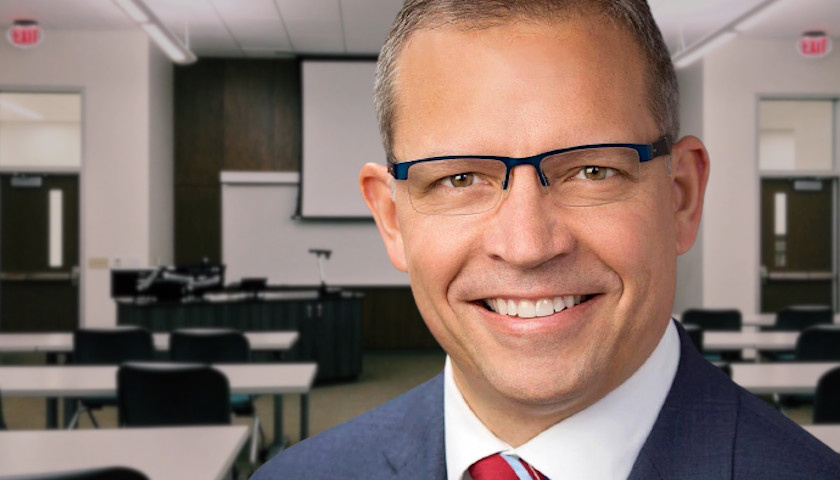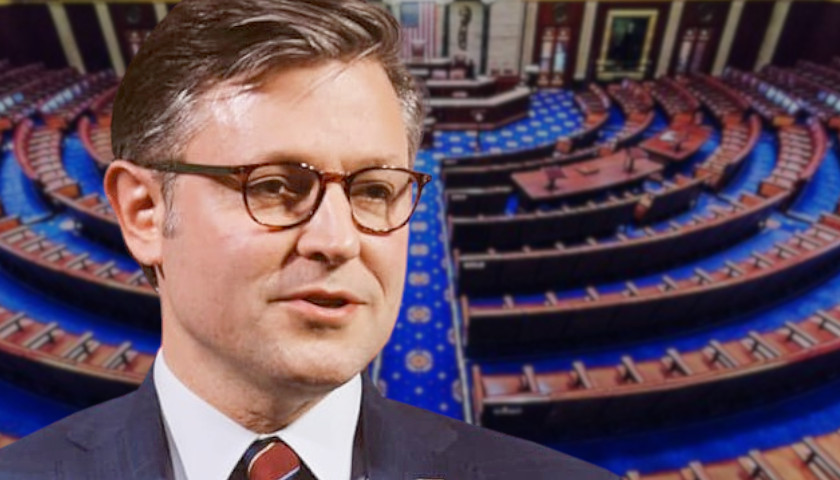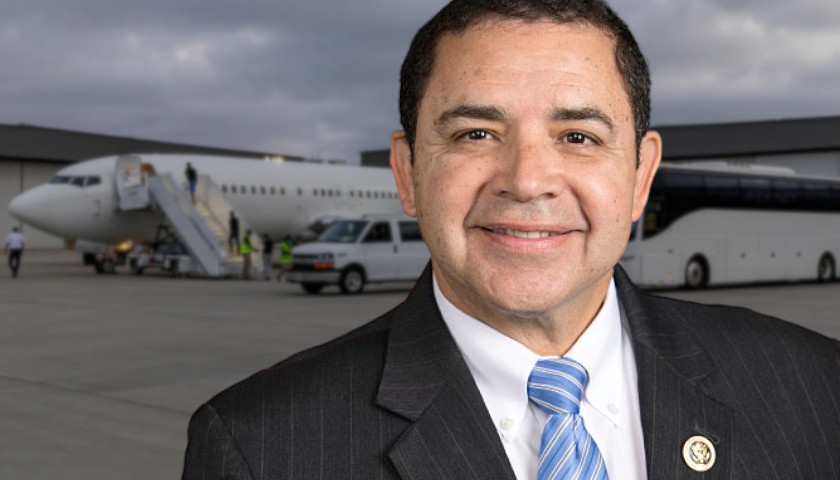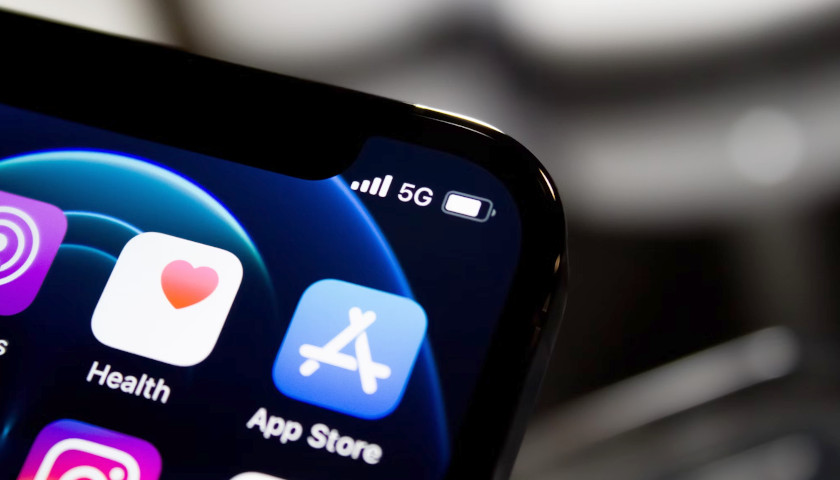Last week The Ohio Star reported on the Ohio Education Association (OEA) Position Statement, which called for schools to suspend in-person learning immediately until January 11. The document outlined four steps the union urges government leaders and schools to follow – reset, restart, reprioritize and resource.
Ohio Governor Mike DeWine held a COVID briefing the day the OEA statement was distributed to the press. During the address, the Governor did not acknowledge the OEA document, but shared information on students and school districts around the state – showing that only 29% of students were currently in the classroom five days a week.
Schools: Most students today are going to school remotely. Only 29% of students are going to school fully in-person. pic.twitter.com/SmM95kcL4W
— Governor Mike DeWine (@GovMikeDeWine) December 7, 2020
The OEA’s plea to Ohioans included requiring local health departments to gain more funding and authority – requiring local boards of health to approve school plans before allowing schools to re-open.
The press release accompanying the position statement – which can be found on the OEA website – quotes the organization’s President Scott DiMauro: “[p]ublic health experts, not the elected politicians that serve on local school boards, should make the determination about whether schools are safe for students and staff to gather in person.”
In the Position Statement that was unanimously approved by the OEA Board, the union writes “OEA fully supports maintaining the authority of the Governor and Ohio Department of Health to implement and enforce efforts to contain community spread.”
Governor DeWine has been a politician since 1976. The current Director of the Department of Health is not a doctor, but an attorney who previously led the Ohio Bureau of Workers Compensation. Direction from local health departments would come from the ODH and Governor Mike DeWine, unless legislation such as Senate Bill 311 passes – a law giving power back to the legislature and Ohioans.
OEA President Scott DiMauro accepted the invitation to talk with The Star in a one-on-one interview.
The Star asked questions submitted from Ohioans around the Buckeye State. The Q&A are below.
Q: You mentioned January 11. How’d you arrive at that date as the point you could go back?
DiMauro: Anticipating that we were going to see something over the winter holidays – Christmas and New Year’s – similar to what a lot of people experienced over Thanksgiving. The idea of January 11 is it allows us to get through a quarantine period following holiday break.
CDC is now recommending that if someone is exposed that they are quarantined for 10 days assuming that they don’t have any symptoms. So 10 days from Jan 1 is Jan 11; also it’s the beginning of that instructional week. It’s just one week later than a lot of the schools would have been starting.
Q: Your press release states that you are following the best science on this recommendation. What science backs that up?
DiMauro: In terms of what the CDC says the conditions that put a school at risk – what they deem as highest risk for spread in the schools – two factors that they particularly call out: 1) the positivity rate is more than 10%; 2) the number of new cases over the last 14 days is at a rate of more than 200 per 100,000 people. As of right now, the last time we checked, the state’s positivity rate was 15.8% – in fact, you may note that the state of Ohio put Ohio on the list of states that you shouldn’t travel to without quarantining. That’s well above that 10% threshold. There are only four zip codes in the entire state of Ohio that were at or below the 200 cases per 100,000 people level in terms of number of new cases. So that’s looking even deeper. Not to mention that we have more purple counties than ever before. Most of the state is red and we are continuing to see huge numbers of new cases.
The other thing I’ll point out is that many school districts have already made that decision to transition to remote learning, either because of large numbers of students and staff that are contracting COVID or large numbers of staff that are being required to quarantine because of direct exposure – leading to shortages of classroom teachers, substitute teachers, and in some cases bus drivers.
So, what we’re saying is let’s take a timeout. Let’s take a pause. Let’s give everyone who is sick time to get better, everybody who is quarantining time to get through that quarantine period. Get through the holidays so that – the long-term goal is to make sure that we’re all back for in-person instruction and we can sustain that. Right now, we’re just seeing so much volume of cases in the system that it is hard to sustain any type of continuity in terms of instruction.
Q: Here’s what we’re hearing and here’s what we’re seeing: We’ve heard CDC say since late July, and again in November, there is no evidence to support that transmission of COVID is happening in the schools. We’re actually hearing anecdotally (personal stories told to us) that teachers and school workers are picking it up in their communities. But the bigger issue we are hearing is that this testing, tracing and quarantining often times, even though they are exposed, there are healthy teachers and workers that are being quarantined – which is putting more pressure on the system. So the question is, given all of that information – why would we want our kids remote when the transmission isn’t happening in the schools and really the larger issue seems to be that healthy teachers and people are being quarantined and that’s really causing the mass shortages?
DiMauro: Keep in mind, we want to be in person with our instruction but in order to get there we have to make sure the conditions are safe. The fact that there is testing, tracing and quarantining happening is a reason the spread is being limited in schools from what we can tell.
I will tell you I am hearing from members all across the state from our field staff that given the volume of cases, schools are having a very difficult time keeping up.
When they have cases, it is more and more difficult for people to identify exactly where they contracted the virus – so this claim that there is no spread in schools, can’t be proven. In fact, there was a case just recently in Hudson in Summit County where the superintendent said that three individuals, based on their contact tracing, the only way they were able to contract the virus was in school. We think all over the state there are a lot of other people who just don’t know.
The other problem is that because of the volume it’s becoming harder and harder to keep up with the contact tracing. The Marion County Health Department just announced they are no longer tracking and contacting people who are direct contacts with COVID-positive individuals because they are simply overwhelmed with the volume and don’t have the resources and staffing to keep up with that.
That is a major red flag. That is why, temporarily, we need a timeout so that we can get everything under control and then get back to in-person instruction following the holiday break.
Q: Looking at what’s going on in different spots – you’ve probably heard about the Mason School District and the devastating thing that’s happened there, where 15 kids were on suicide watch and hospitalized. We’re getting more information about education uptake falling off significantly, this seems to fly in the face of some of the very serious issues that our kids are facing. So, if you’re talking to a pissed-off parent what do you say about that?
DiMauro: We fully agree that we want our students in-person for instruction. There is no substitute for the personal contact that exists between an educator and a student in the classroom. That can happen when conditions are safe. We have schools struggling to keep their doors open because of the high number of cases and the high number of people who are required to quarantine – and they should be required to quarantine in order to make sure the spread isn’t getting worse. We have to make sure we are prioritizing keeping schools safe. Now, part of that is we need everybody to be working together to be sure that out in public, everyone is wearing a mask. That out in public we are avoiding large social gatherings. That out in public we are making sure that safe schools is the priority over other types of activities that are clearly not essential.
When we hear stories like a nightclub having a concert and 500 people being in there maskless for a superspreader event the message is we don’t really care about safe schools because we’re not doing what we need to do to contain the spread of the virus in our community. So let’s prioritize making sure our schools are safe – we’re seeing in Europe, where they’ve been able to keep schools open, sometimes they’ve had to close other aspects of their communities down. You have to make tough choices. When you try to be all things to all people then you don’t have things under control and in the long run it’s bad for everybody. It’s bad for people whose lives are at risk. It’s bad for school employees, teachers, education support professionals who do incredibly important work. We need to make sure that we are prioritizing – protecting the health and safety of everybody while continuing to do all we can to support students in their learning.
Q: We’ve heard there’s a dangerous spike in COVID – and obviously cases have gone up 10-times. Looking back to April there were 300-400 people being tested positive a day; now we are 5,000/6,000 a day…10,000 on some days. We know right now our high point in deaths was in April and it was 64 – back when we had 300 – 400 positive cases a day. Our second highpoint (deaths aren’t something to celebrate and I hate talking about them in statistics – it sucks but gives perspective) we had 59 deaths on November 20. We have 10,000 people positive a day, or 6,000 a day depending on which one-week window of time you’re looking at, so even though cases have gone up 10X, the death rate has actually gone down. A lot of people are saying “we’re at 94% masking compliance, 97% social distancing compliance but you simply don’t stop the spread of the virus,” does that give you pause? Hospitals are below 85% capacity – 71% hospital beds being used, 77% of ICU is full throughout the state. So, we call these our worst days. Cases are higher. People are in the hospital and the virus is real. How do you not combine all of that and say – hospitals are not overflowing, deaths have not been near where they were in April, despite cases up 10X and we have no indication that people complying with things the Governor has asked people to comply with is stopping the virus…why don’t we just get kids back in school?
DiMauro: I think the answer is we want kids to be in school. We need to make sure the conditions are right to make sure that can happen in a way that is sustainable. Even if you don’t have precautionary closure of in-person instruction and are simply reacting to the realities after the fact, which I don’t think is a very prudent approach, I think we want to be proactive and not reactive. But even continuing with a reactive approach, when you have schools that are struggling to just have enough people to make sure that classrooms are covered, that bus routes are covered, that there is enough under control so that you don’t have large numbers of students staying home and missing the instruction that’s happening in the classroom, we’ve got to get through a reset period so that we can start anew after the holidays and really get through this together.
I don’t think we’re disagreeing in terms of what the goal is, we’re saying in the short term we’ve got a relatively small short-term sacrifice in order to get to a long-term position where we need to be in order to serve the needs of our students and our communities. That means that all of us have to sacrifice to get there.
CDC Director Robert Redfield said in November “[t]he infections that we’ve identified in schools, when they’ve been evaluated, were not acquired in schools. They were actually acquired in the community and in the household.”
The Star analyzed the Ohio COVID School Dashboard and calculated that of the 1.66 million public school children and the nearly 50,000 private school kids, 17,143 students had tested positive for COVID – about 1% of the total school population.
Teachers and staff accounted for 11,075 infections, which is 8% of the 138,000 education workers statewide.
Brown University Professor Emily Oster has tracked infections in schools by kids and staff – over 8.7 million students and 1.3 million staff members. Shereported 19 infections per 100,000 students and 44 infections per 100,00 staff members.
The forecasted spike in cases and hospitalizations from Thanksgiving didn’t happen according to the Ohio COVID Dashboard, which assigns cases by onset date and hospitalizations by admission date.
Loss of time in the classroom has not only produced a learning and cognitive issue for students, although third grade reading correlates to high school graduation. Education attainment correlates to life longevity. The Journal of the American Medical Association (JAMA) reports missed education from COVID policies will result loss of life for children age 5-11.
The JAMA study divulged “missed instruction during 2020 could be associated with an estimated 5.53 million years of life lost. This loss in life expectancy was likely to be greater than would have been observed if leaving primary schools open had led to an expansion of the first wave of the pandemic.”
Loss of life through education is not the only fatal consequence of kids not being in school. Last week, KTSM in Brunswick, Maine told the story of a high school student who took his own life after being “locked in the house” – referring to the struggle to cope with not being able to play football and the restrictions that kept him socially distanced.
In October suicide deaths in Japan registered 2,153 – the one month total more than the number of COVID deaths in the country during the entire pandemic. The National Center for Child Health and Development reported that 75% of children in Japan showed signs of stress from the pandemic.
In November Mason City Schools Superintendent Jonathan Cooper told the story through video and a report in a Cincinnati newspaper of 15 students who had been hospitalized in that district due to suicide ideation.
Right now we are purportedly sacrificing the education, emotional wellbeing and lives of our children to ostensibly save the health and lives of adults who, largely are not at grave risk. According to the CDC the infection fatality rate of COVID per age group is as follows:
Age 0-19: 0.00003
Age 20-49: 0.0002
Age 50-69: 0.005
Age 70+: 0.05
That means the survival rate is 99.99%, 99.98%, 99.5% and 94.6% respectively. Although it is grim to discuss death in statistics, public officials must make choices based on the aggregate impact of policies on all people groups.
While long haul implications from COVID are still being studied, early discussions about mycarditis (heart inflammation), encephalitis (brain inflammation), myositis (muscle inflammation), sepsis and organ failure are all hallmarks of influenza as well, according to the CDC.
Deciding what is safe will require more than a look at COIVD cases and hospitalizations when deciding public policy. During Governor DeWine’s COVID briefing on Monday, December 14 he did not mention any pending guidance from the state to further restrict education delivery.
– – –
Jack Windsor is Managing Editor and an Investigative Reporter at The Ohio Star. Windsor is also an Investigative Reporter at WMFD-TV. Follow Jack on Twitter. Email tips to [email protected].
Photo “Scott DiMauro” by Scott DiMauro for OEA President.






[…] an interview with The Star, Ohio Education Association President Scott DiMauro talked about the volume of COVID […]
Thanks, Mr. Windsor, for continuing to present the numbers in context and to ask the common sense questions that politically motivated actors try to sweep under the carpet! Priceless.